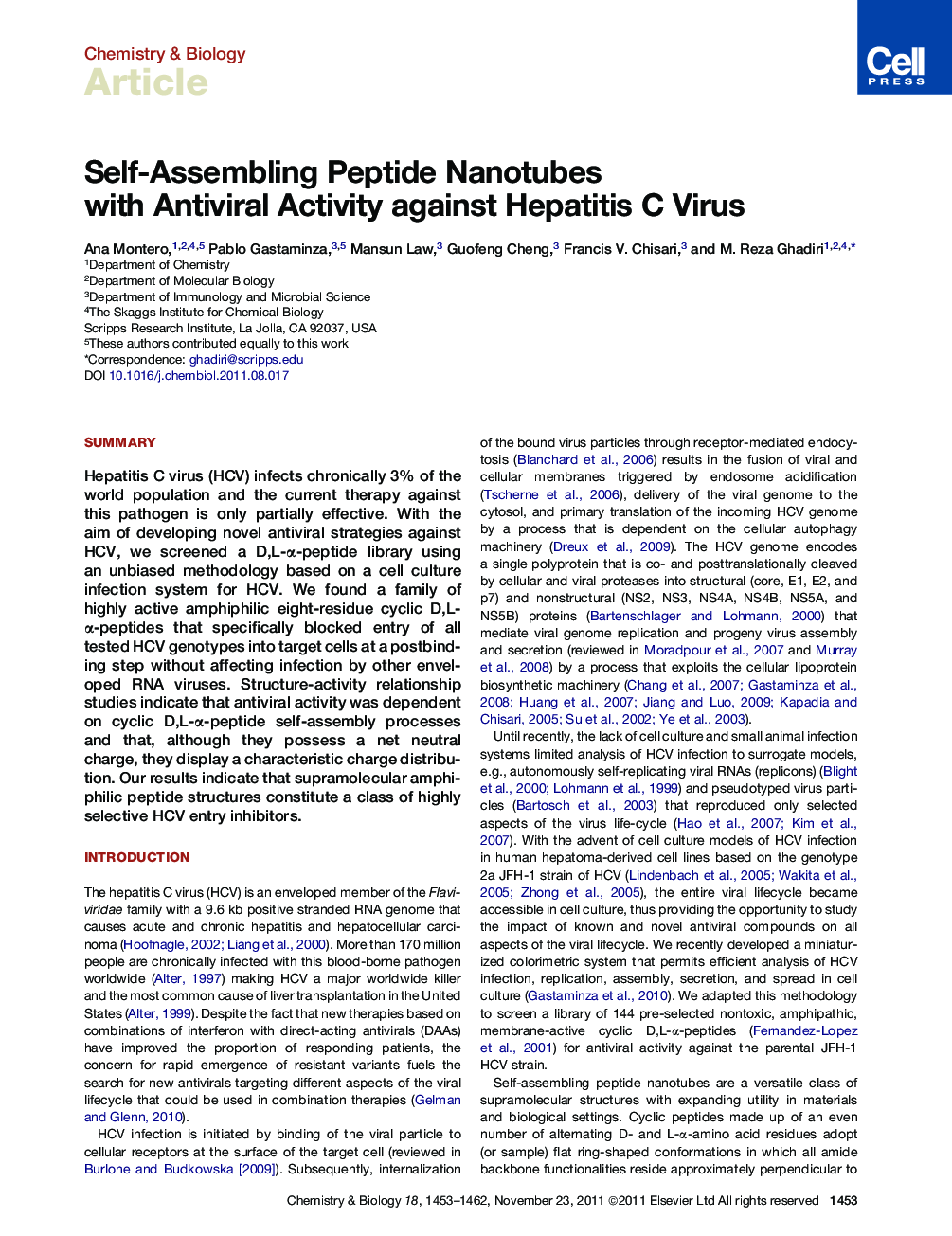| Article ID | Journal | Published Year | Pages | File Type |
|---|---|---|---|---|
| 1391920 | Chemistry & Biology | 2011 | 10 Pages |
SummaryHepatitis C virus (HCV) infects chronically 3% of the world population and the current therapy against this pathogen is only partially effective. With the aim of developing novel antiviral strategies against HCV, we screened a D,L-α-peptide library using an unbiased methodology based on a cell culture infection system for HCV. We found a family of highly active amphiphilic eight-residue cyclic D,L-α-peptides that specifically blocked entry of all tested HCV genotypes into target cells at a postbinding step without affecting infection by other enveloped RNA viruses. Structure-activity relationship studies indicate that antiviral activity was dependent on cyclic D,L-α-peptide self-assembly processes and that, although they possess a net neutral charge, they display a characteristic charge distribution. Our results indicate that supramolecular amphiphilic peptide structures constitute a class of highly selective HCV entry inhibitors.
► A miniaturized colorimetric screening identified a family of net-charge neutral compounds with antiviral activity against HCV ► A family of highly active amphiphilic eight-residue cyclic D,L-α-peptides specifically blocks entry of all tested HCV genotypes into target cells at a postbinding step ► Amphiphilic cyclic D,L-α-peptides efficiently control viral spread in cell culture at low micromolar concentrations without measurable toxicity ► Membrane active cyclic D,L-α-peptides that self-assemble into supramolecular nanotubular structures constitute a class of highly selective HCV entry inhibitors
